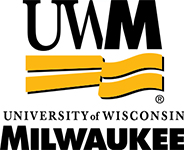Hsp90 inhibitor 17-DMAG decreases expression of conserved herpesvirus protein kinases and reduces virus production in Epstein-Barr virus-infected cells. J Virol 2013 Sep;87(18):10126-38
Date
07/12/2013Pubmed ID
23843639Pubmed Central ID
PMC3754017DOI
10.1128/JVI.01671-13Scopus ID
2-s2.0-84883294655 (requires institutional sign-in at Scopus site) 44 CitationsAbstract
All eight human herpesviruses have a conserved herpesvirus protein kinase (CHPK) that is important for the lytic phase of the viral life cycle. In this study, we show that heat shock protein 90 (Hsp90) interacts directly with each of the eight CHPKs, and we demonstrate that an Hsp90 inhibitor drug, 17-dimethylaminoethylamino-17-demethoxygeldanamycin (17-DMAG), decreases expression of all eight CHPKs in transfected HeLa cells. 17-DMAG also decreases expression the of the endogenous Epstein-Barr virus protein kinase (EBV PK, encoded by the BGLF4 gene) in lytically infected EBV-positive cells and inhibits phosphorylation of several different known EBV PK target proteins. Furthermore, 17-DMAG treatment abrogates expression of the human cytomegalovirus (HCMV) kinase UL97 in HCMV-infected human fibroblasts. Importantly, 17-DMAG treatment decreased the EBV titer approximately 100-fold in lytically infected AGS-Akata cells without causing significant cellular toxicity during the same time frame. Increased EBV PK expression in 17-DMAG-treated AGS-Akata cells did not restore EBV titers, suggesting that 17-DMAG simultaneously targets multiple viral and/or cellular proteins required for efficient viral replication. These results suggest that Hsp90 inhibitors, including 17-DMAG, may be a promising group of drugs that could have profound antiviral effects on herpesviruses.
Author List
Sun X, Bristol JA, Iwahori S, Hagemeier SR, Meng Q, Barlow EA, Fingeroth JD, Tarakanova VL, Kalejta RF, Kenney SCAuthor
Vera Tarakanova PhD Professor in the Microbiology and Immunology department at Medical College of WisconsinMESH terms used to index this publication - Major topics in bold
Antiviral AgentsBenzoquinones
Cell Line
Enzyme Inhibitors
Epithelial Cells
Fibroblasts
HSP90 Heat-Shock Proteins
Herpesvirus 4, Human
Humans
Lactams, Macrocyclic
Protein Interaction Mapping
Protein Kinases
Viral Load
Virus Cultivation
Virus Replication









